by John Buckley
First published in Milling and Grain, April 2015
Grain prices have steadied in recent weeks after their long drop amid further signs that 2015/16 supplies will be ‘less loose’ than this season’s - if not exactly ‘tight’ by historical comparison.
Several factors support this view. In the wheat market, analysts are looking for a decline in this year’s Russian, Ukrainian and European crops, possibly the USA’s too (less sown, more winterkill, droughts etc). As we go to press the trade is also getting excited about a possible major flood loss for India’s crop (the world’s second largest wheat producer and consumer).
How much may wheat production decline? The UN Food & Agriculture Organisation recently suggested the next crop could still get to 720m tonnes – just 7m short of last year’s record. That might seem a bit optimistic given all the above factors (more detail on those below). The International Grains Council meanwhile offered a preliminary assessment of 709m (it remains more conservative on last year’s too at 719m) while the Canadian Wheat has just come out with the lowest estimate of just 703.4m (versus last year’s 724.8m).
But does the world actually need another 720m tonnes-plus harvest? Probably not. Last year’s consumption, after all, was estimated at less than 715m, resulting in a 10m tonne stock buildup that will help cushion the impact of a smaller 2015 crop.
Until recently, that 2014/15 surplus had been weighing heavily on prices which hit five year lows last autumn and recently seemed to be heading back in that direction again. Can we expect another season of consumption growth pacing last year’s 10m tonnes – (mainly in animal feeds)? The IGC projects a mere 3m tonnes increase in next season’s total wheat consumption at 711m which would reduce ending stocks by just 2m tonnes (from this year’s 198m. It’s possible if maize competition in feeds recedes a little (again, see below) and wheat prices are competitive enough. If not, then wheat markets may be more or less in balance or need only a modest stock drawdown. None of this is the stuff that bull markets are made of.
While the direction winter wheat output is taking is becoming a bit easier to pin down now, most of the key spring wheat crops had yet to be sown as we went to press. Agriculture Canada recently estimated a similar area to last year’s for its own spring wheat crop (the bulk of its annual wheat harvest) while the country’s Wheat Board sees the total crop down from 29.3m to 28.7m tonnes. The EU is also expected to so somewhat less than last year. Russia and Ukraine, whose winter wheat crops appeared to be floundering from the word go, would normally be expected to make up expected any losses to these with more spring sown crops. But, as detailed in our earlier reviews, both are under considerable financing restraints from their weak currencies (expensive input) and credit difficulties (including soaring interest rates).
So how low might this year’s Russian wheat crop go? The government has recently reiterated its view that the total grain crop can make 100m tonnes (versus last year’s 105.3m), maybe a couple of million more as some winter crops came through in better shape than expected earlier. That, western observers say, would imply wheat around 55m tonnes. However, not everyone agrees, give that the country’s ag ministry recently estimated winter losses of almost 17 percent of the crop – while acknowledging that 9 percent of what did come through was in poor shape. Consultant Sovecon suggests the grain total (including spring planted crops) could be in a range of 85m to 92m tonnes, with wheat contributing somewhere between 47m and 53m. Even lower forecasts have been aired (75-78m grain total) although these are ‘worst case scenarios’ that are probably too pessimistic now.
Meanwhile, due to their recent export controls, both Russia and Ukraine will have larger wheat stocks to carry into the new season (about 6m more tha last year in total). Both can therefore be expected to maintain a fairly active presence on the world markets but probably nowhere near the record levels of recent years. The CWB suggests both Russian and Ukrainian wheat exports will drop by about 12% to 17.4m and 9.7m tonnes respectively. It also sees Canadian wheat exports falling by 11% to under 21m tonnes but expects the EU and US to take up much of the slack with higher exports of – Europe’s rising t a new record 32.35m and the USA’s from 24.5m to 27.6m tonnes (These are all interestingly precise forecasts for this early stage in the year and, as in most years past, will doubtless be open to a fair amount of revision as the season unfolds).
Europe’s wheat crop is expected to decline in terms of both area and yield. Some early estimates had the total, including durum, 3m to 5m tonnes below last year’s giant 155m tonne harvest. More recently, grain trader lobby COCERAL came out with a 10m tonne drop for soft milling wheat at 138.6m tonnes. The EU’s own crop forecasting unit MARS sees soft wheat yields dropping by 4.8 percent to an average 5.29 tonnes per hectare. Dryness has become a bit of a concern in Germany, the Czech republic and Poland. German yields alone are seen dropping by 11.7 percent while Hungary and Rumania are also expected to yield significantly less than last year .
That supplies in the EU will still be more than comfortable is underlined by the fact that (a) the EU will also carry in over 5m tonnes more stocks this season than last and (b) various observers including the EU Commission think these will actually rise again in 2015/16 (even with another year of record exports) to a 10-year high of around 19.5/20m tonnes. Again, that hardly seems a recipe for higher wheat prices going into the new season that starts in July.
That said, the major northern hemisphere wheat exporters’ crops include a fair proportion of as yet unsown spring wheat and the entire crop still has to reach harvest and get safely in the bins.
How do the markets view this set-up influence forward wheat costs? The CBOT futures market has current cash wheat prices just under $5 per bushel – about $184/tonne. For mid-2016 it predicts prices 10% higher at around $5.50 ($202/t) and for those who want to ponder the more speculative 2017 view, it has starting prices of $5.67 softening by mid-year to $5.62/bu ($206). The EU’s own milling wheat futures market has recently been trading €185/190/tonne, quoting similar prices well into 2016 and a fairly modest €5/tonne premium into mid-2017. While futures often get the ’price revelation’ wrong (they tended to predict higher rather than the lower prices that actually developed for the last couple of seasons) the current price structure at least confirms that most participants are fairly relaxed about the forward outlook for wheat supplies.
Less maize this year
The key question emerging for the maize market in the season ahead is not whether but by how much will the global surplus fall? Some early markers have already been put down by the International Grains Council – looking for a potential drop in 2015/16 production from 990m to 941m tonnes while the Canadian Wheat Board saw a smaller decline to 973.5m tonnes.
While technically counted as 2014/15 crops, the South American harvests for the current season have still to be resolved with planting only recently completed for the Argentine crop and, as we went to press, still underway for Brazil’s second or Safrinha crop – the part that determines its export supply and thus its impact on the world maize market. At this stage, both countries are expected to produce rather more than the USDA predicted in March (75m for Brazil and 23.5m for Argentina).
Both have only just got into marketing these crops, discounting the US price by about $8 to $10 per tonne and, along with last year’s record US and (though down) still relatively large CIS crops, helping to keeping the world export cost of maize at relatively cheap levels compared with recent past years.
During early April, all eyes were on the US planting intentions report from the USDA – its first survey-based forecast for the new season. The trade had been expecting US maize area to fall by 2m to 3m acres from last year’s 90.6m. On top of that a repeat of that crop’s record (171bu/acre) yield was also thought unlikely. In the event the USDA forecast a decline in area of just 1.4m acres which, along with a higher than expected estimate for US March stocks immediately sent US prices lower. The effect might be short-lived, however, as current wet conditions in the US southern states are holding up early planting and making a switch to soyabeans – which can be planted later – more likely in this region. So does the corn/soya price ratio which has increasingly favoured the latter crop.
EU maize putput is expected by COCERAL, the grain trade lobby, to drop 10 percent to 66m tonnes from last year’s 74m. Within the CIS countries, tight finance and weak currencies boosting input costs are also expected to lower maize planting and production. As we go to press, the Ukrainian consultant APK Inform is forecasting its crop will decline by almost 15% to24.3m tonnes. On the face of it, all this points to a smaller world maize crop in 2015 – but how much smaller? Estimates range from a 30m to a 40m tonnes drop – or more. But against that have to be counted this season’s larger carryout stocks
Based on its global maize forecast for 2015/16, the IGC has calculated a potential drop in world carryover stocks for the new season of about 20m tonnes to 171m. That sounds quite a fall but it would still leave them at their third highest level since Y2K – hardly a signal for runaway maize prices.
Global feed demand for maize, the largest single outlet, is expected to show an increase of just over 24m tonnes for the current season, ending August 31 compared with 55.4m in 2013/14. That suggests other uses are more or less stagnating after a 33m tonne increase in these sectors in the previous season. A large chunk of that is clearly down to the dramatic slowdown in growth of corn ethanol production amid the collapsing price of crude mineral oil.
Recent maize price trends have been erratic, waiting on more concrete new crop pointers and subject to fund money ebbing and flowing in tandem with ‘macro-economic’ factors like the strength of the US diollar, the weakness of the euro and attempts to rally the collapsed price of crude oil. These factors seem likely to continue creating volatility into second half 2015.
Proteins – soya surplus keeps on growing
Given the unprecedented weight of supplies overhanging the soyabean market, it’s slightly surprising that prices have held up as well as they have in the last couple of months. Partly that’s been down to some delays in the harvest and marketing of South American crops, exacerbated by some transport strikes in Brazil and some threatened farmer/port stoppages in Argentina too. That has kept demand for US soyabeans strong at a point in the season when this really should be tailing off in favour of the South American suppliers. However, barring some cataclysmic US weather upset in the weeks and months ahead, this is really only delaying the eventual, inevitable, price response to the supply outlook.
If anything, there may be even more soyabeans to dispose of than we expected back in February. Now that the Latin America crops are well into harvest (which is almost over in the main Brazilian producer states), stellar yields have been encouraging some observers to go for a higher regional crop estimate.
First published in Milling and Grain, April 2015
Grain prices have steadied in recent weeks after their long drop amid further signs that 2015/16 supplies will be ‘less loose’ than this season’s - if not exactly ‘tight’ by historical comparison.
Several factors support this view. In the wheat market, analysts are looking for a decline in this year’s Russian, Ukrainian and European crops, possibly the USA’s too (less sown, more winterkill, droughts etc). As we go to press the trade is also getting excited about a possible major flood loss for India’s crop (the world’s second largest wheat producer and consumer).
How much may wheat production decline? The UN Food & Agriculture Organisation recently suggested the next crop could still get to 720m tonnes – just 7m short of last year’s record. That might seem a bit optimistic given all the above factors (more detail on those below). The International Grains Council meanwhile offered a preliminary assessment of 709m (it remains more conservative on last year’s too at 719m) while the Canadian Wheat has just come out with the lowest estimate of just 703.4m (versus last year’s 724.8m).
But does the world actually need another 720m tonnes-plus harvest? Probably not. Last year’s consumption, after all, was estimated at less than 715m, resulting in a 10m tonne stock buildup that will help cushion the impact of a smaller 2015 crop.
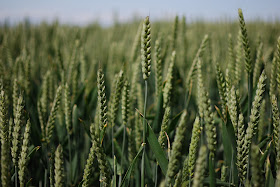 |
| Image: Nicholas Boos |
While the direction winter wheat output is taking is becoming a bit easier to pin down now, most of the key spring wheat crops had yet to be sown as we went to press. Agriculture Canada recently estimated a similar area to last year’s for its own spring wheat crop (the bulk of its annual wheat harvest) while the country’s Wheat Board sees the total crop down from 29.3m to 28.7m tonnes. The EU is also expected to so somewhat less than last year. Russia and Ukraine, whose winter wheat crops appeared to be floundering from the word go, would normally be expected to make up expected any losses to these with more spring sown crops. But, as detailed in our earlier reviews, both are under considerable financing restraints from their weak currencies (expensive input) and credit difficulties (including soaring interest rates).
So how low might this year’s Russian wheat crop go? The government has recently reiterated its view that the total grain crop can make 100m tonnes (versus last year’s 105.3m), maybe a couple of million more as some winter crops came through in better shape than expected earlier. That, western observers say, would imply wheat around 55m tonnes. However, not everyone agrees, give that the country’s ag ministry recently estimated winter losses of almost 17 percent of the crop – while acknowledging that 9 percent of what did come through was in poor shape. Consultant Sovecon suggests the grain total (including spring planted crops) could be in a range of 85m to 92m tonnes, with wheat contributing somewhere between 47m and 53m. Even lower forecasts have been aired (75-78m grain total) although these are ‘worst case scenarios’ that are probably too pessimistic now.
Meanwhile, due to their recent export controls, both Russia and Ukraine will have larger wheat stocks to carry into the new season (about 6m more tha last year in total). Both can therefore be expected to maintain a fairly active presence on the world markets but probably nowhere near the record levels of recent years. The CWB suggests both Russian and Ukrainian wheat exports will drop by about 12% to 17.4m and 9.7m tonnes respectively. It also sees Canadian wheat exports falling by 11% to under 21m tonnes but expects the EU and US to take up much of the slack with higher exports of – Europe’s rising t a new record 32.35m and the USA’s from 24.5m to 27.6m tonnes (These are all interestingly precise forecasts for this early stage in the year and, as in most years past, will doubtless be open to a fair amount of revision as the season unfolds).
Europe’s wheat crop is expected to decline in terms of both area and yield. Some early estimates had the total, including durum, 3m to 5m tonnes below last year’s giant 155m tonne harvest. More recently, grain trader lobby COCERAL came out with a 10m tonne drop for soft milling wheat at 138.6m tonnes. The EU’s own crop forecasting unit MARS sees soft wheat yields dropping by 4.8 percent to an average 5.29 tonnes per hectare. Dryness has become a bit of a concern in Germany, the Czech republic and Poland. German yields alone are seen dropping by 11.7 percent while Hungary and Rumania are also expected to yield significantly less than last year .
That supplies in the EU will still be more than comfortable is underlined by the fact that (a) the EU will also carry in over 5m tonnes more stocks this season than last and (b) various observers including the EU Commission think these will actually rise again in 2015/16 (even with another year of record exports) to a 10-year high of around 19.5/20m tonnes. Again, that hardly seems a recipe for higher wheat prices going into the new season that starts in July.
That said, the major northern hemisphere wheat exporters’ crops include a fair proportion of as yet unsown spring wheat and the entire crop still has to reach harvest and get safely in the bins.
How do the markets view this set-up influence forward wheat costs? The CBOT futures market has current cash wheat prices just under $5 per bushel – about $184/tonne. For mid-2016 it predicts prices 10% higher at around $5.50 ($202/t) and for those who want to ponder the more speculative 2017 view, it has starting prices of $5.67 softening by mid-year to $5.62/bu ($206). The EU’s own milling wheat futures market has recently been trading €185/190/tonne, quoting similar prices well into 2016 and a fairly modest €5/tonne premium into mid-2017. While futures often get the ’price revelation’ wrong (they tended to predict higher rather than the lower prices that actually developed for the last couple of seasons) the current price structure at least confirms that most participants are fairly relaxed about the forward outlook for wheat supplies.
Less maize this year
The key question emerging for the maize market in the season ahead is not whether but by how much will the global surplus fall? Some early markers have already been put down by the International Grains Council – looking for a potential drop in 2015/16 production from 990m to 941m tonnes while the Canadian Wheat Board saw a smaller decline to 973.5m tonnes.
While technically counted as 2014/15 crops, the South American harvests for the current season have still to be resolved with planting only recently completed for the Argentine crop and, as we went to press, still underway for Brazil’s second or Safrinha crop – the part that determines its export supply and thus its impact on the world maize market. At this stage, both countries are expected to produce rather more than the USDA predicted in March (75m for Brazil and 23.5m for Argentina).
Both have only just got into marketing these crops, discounting the US price by about $8 to $10 per tonne and, along with last year’s record US and (though down) still relatively large CIS crops, helping to keeping the world export cost of maize at relatively cheap levels compared with recent past years.
During early April, all eyes were on the US planting intentions report from the USDA – its first survey-based forecast for the new season. The trade had been expecting US maize area to fall by 2m to 3m acres from last year’s 90.6m. On top of that a repeat of that crop’s record (171bu/acre) yield was also thought unlikely. In the event the USDA forecast a decline in area of just 1.4m acres which, along with a higher than expected estimate for US March stocks immediately sent US prices lower. The effect might be short-lived, however, as current wet conditions in the US southern states are holding up early planting and making a switch to soyabeans – which can be planted later – more likely in this region. So does the corn/soya price ratio which has increasingly favoured the latter crop.
EU maize putput is expected by COCERAL, the grain trade lobby, to drop 10 percent to 66m tonnes from last year’s 74m. Within the CIS countries, tight finance and weak currencies boosting input costs are also expected to lower maize planting and production. As we go to press, the Ukrainian consultant APK Inform is forecasting its crop will decline by almost 15% to24.3m tonnes. On the face of it, all this points to a smaller world maize crop in 2015 – but how much smaller? Estimates range from a 30m to a 40m tonnes drop – or more. But against that have to be counted this season’s larger carryout stocks
Based on its global maize forecast for 2015/16, the IGC has calculated a potential drop in world carryover stocks for the new season of about 20m tonnes to 171m. That sounds quite a fall but it would still leave them at their third highest level since Y2K – hardly a signal for runaway maize prices.
Global feed demand for maize, the largest single outlet, is expected to show an increase of just over 24m tonnes for the current season, ending August 31 compared with 55.4m in 2013/14. That suggests other uses are more or less stagnating after a 33m tonne increase in these sectors in the previous season. A large chunk of that is clearly down to the dramatic slowdown in growth of corn ethanol production amid the collapsing price of crude mineral oil.
Recent maize price trends have been erratic, waiting on more concrete new crop pointers and subject to fund money ebbing and flowing in tandem with ‘macro-economic’ factors like the strength of the US diollar, the weakness of the euro and attempts to rally the collapsed price of crude oil. These factors seem likely to continue creating volatility into second half 2015.
Proteins – soya surplus keeps on growing
Given the unprecedented weight of supplies overhanging the soyabean market, it’s slightly surprising that prices have held up as well as they have in the last couple of months. Partly that’s been down to some delays in the harvest and marketing of South American crops, exacerbated by some transport strikes in Brazil and some threatened farmer/port stoppages in Argentina too. That has kept demand for US soyabeans strong at a point in the season when this really should be tailing off in favour of the South American suppliers. However, barring some cataclysmic US weather upset in the weeks and months ahead, this is really only delaying the eventual, inevitable, price response to the supply outlook.
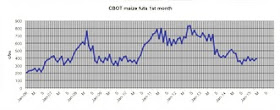 To recap on 2014/15 supply, the US crop soared by 16.6m tonnes, Brazil’s is seen up by 8.5m and Argentina’s by at least 2m (but now, probably more like 4m tonnes). So world production increases by 31/33m tonnes or over 11% - maybe even more. Global crush on the other hand, is seen rising by only 13m tonnes, the remainder mostly added to stocks carried into the 2015/16 season that starts in September. These, not surprisingly, will be record high at around 90m tonnes, so a world awash with soya is moving from prediction to reality.
To recap on 2014/15 supply, the US crop soared by 16.6m tonnes, Brazil’s is seen up by 8.5m and Argentina’s by at least 2m (but now, probably more like 4m tonnes). So world production increases by 31/33m tonnes or over 11% - maybe even more. Global crush on the other hand, is seen rising by only 13m tonnes, the remainder mostly added to stocks carried into the 2015/16 season that starts in September. These, not surprisingly, will be record high at around 90m tonnes, so a world awash with soya is moving from prediction to reality.In late March, the USDA released a slightly lower estimate for this year’s US planted acreage at 84.6m versus trade expectations of 85.9m but still up on last year’s 83.7m – and a new record high. Many US analysts still think this under-rates what farmers will actually sow. Assuming normal weather, planted/harvest area ratios and trend-line yield, it extrapolates to a potential crop of 104/105m tonnes. That’s 3m to 4m under last year’s which was about 10m larger than combined export and domestic crush needs. Weather permitting, then, the soya surplus goes on through late 2015 when attention will turn back to the next Latin American crops.
Accounting for about half the world’s oilseeds and over two thirds of global oilmeal production, amply- supplied soya will remain the main influence on the smaller oilseed/meal markets, whose supplies are expected to tighten somewhat this season. Rapeseed output is expected to drop mainly in the EU and CIS countries. Sunflowerseed crops are expected to decline within both Russia and Ukraine. Nonetheless the global oilseed market will remain in huge surplus and the large stocks of soya carried from one season to the next will be available to crush for more meal if the market demands it.
All this spells a fairly placid, possibly cheaper meal market ahead – in dollar terms at least. For consumers within the Euro-zone, the equation is spoiled by the weakness of the single currency, constantly offsetting price declines in supplier markets.
Key factors ahead
Wheat
- Traders are still debating how far this year’s Russian wheat crop will decline after a dry start, a higher risk of frost damage and difficulty financing spring sowings. A 10-15m tonne fall would probably encourage the government to keep some sort of controls on exports, probably an extension of this season’s ‘temporary’ duty. Ukraine may also be a more cautious seller if its crop declines somewhat as expected. Both at least have larger stocks to carry into 2015/16 but Russia particularly may want to conserve more of these until its domestic food price inflation (and its troubled economy) settles down. A smaller role played by Russia and Ukraine in the world wheat export market wouldn’t mean tight supplies but it would keep prices off the floor set by these two traditionally cheap sellers in recent years.
- Condition ratings for the key US winter wheat crop are not great but at last better than last year’s. That suggests better yields to compensate for a slightly lower planted area. The total US wheat crop size won’t reach the levels seen in the past but – given importers increasing preference for other, cheaper origins, it should be adequate to meet demand.
- European crops are mostly looking good, especially the key French crop, which could set a new record. Some analysts even see the EU wheat total approaching last year’s all-time peak (versus a 5m to 7m tonne drop expected earlier). Along with large carryover stocks, this spells an abundant EU wheat supply to meet both domestic and export needs although, as always, the summer months will decide how much of it comes up to adequate milling specifications.
- Among the other key exporters, Canada expects to sow a similar crop to last year’s. Right now, its spring planting weather will be the key to success. Australia meanwhile seems to be getting some needed rains just in time before its main planting season.
- World stocks of wheat carried into 2015/16 remain hefty, a cushion against any crop weather problems in the months ahead.
- The drop in wheat values close to or, for some farmers below, cost of production remains an issue that may affect future sowing plans.
- Global feed consumption of wheat is expected to rise by about 9m tonnes this season, if remaining below the high levels of three years ago. But will ethanol use of wheat reach expected levels in Europe under the low oil-price scenario?
- How much maize will the US sow in 2015? Current forecasts suggest a cutback but still enough for another large crop which, with large carryover stocks from 2014, should keep this market well-supplied.
- Ukrainian and Russian maize crops will decline this year but remain very large by comparison with the previous decade, keeping Ukraine especially in the van of international export competition.
- Along with ample maize supplies from Latin America, this should maintain the more competitive global export market for maize that we’ve seen in recent years – maybe not at quite the same frenetic pace but still likely to demand some restrainr from world maize prices.
- A record domestic maize crop has enabled EU consumers to slash imports this season – the main factor in a lower global maize trade. A smaller 2015 crop may affect demand patterns here.
- Competition for coarse grain custom has continued from large feed wheat and adequate barley supplies, helping to contain livestock feeders’ costs.
- How much maize will the US ethanol industry use if the price of crude oil does stay on the floor?
- China has contained its potentially large maize imports with a switch to sorghum – in the process stimulating key supplier, the USA, to grow more this year. China is also using a lot more barley.
- Huge US and Lat-Am soyabean crop surpluses continue to offer potential for cheaper global oilmeal costs as 2015 progresses.
- Lower oilmeal costs and ample supplies could encourage greater than expected demand for these products in countries developing livestock production systems – China, India, Indonesia etc. Developed consumers like the USA may also use more as high meat prices contribute to profitability. Fortunately for consumers worldwide, the supply outlook remains good.
- The slowdowns and reversals seen in global rapeseed and sunflower crop expansions in the past year are likely to be extended in 2015. However, as ‘oil-rich’ oilseeds these will have less impact on the meal sector which will take its main cue, as usual, from the all-powerful soyabean market.
- That suggests soya meal will raise its already dominant share of the protein market. As the high-protein, reliable quality product too, soya will hopefully continue to force price restraint across the meal sector.
Read the magazine HERE.
The Global Miller
This blog is maintained by The Global Miller staff and is supported by the magazine GFMT
which is published by Perendale Publishers Limited.
For additional daily news from milling around the world: global-milling.com

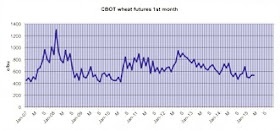

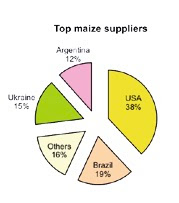
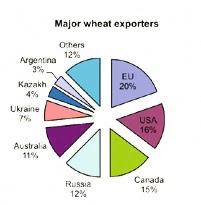
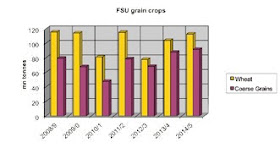
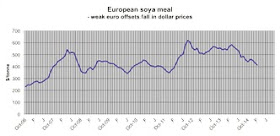
No comments:
Post a Comment